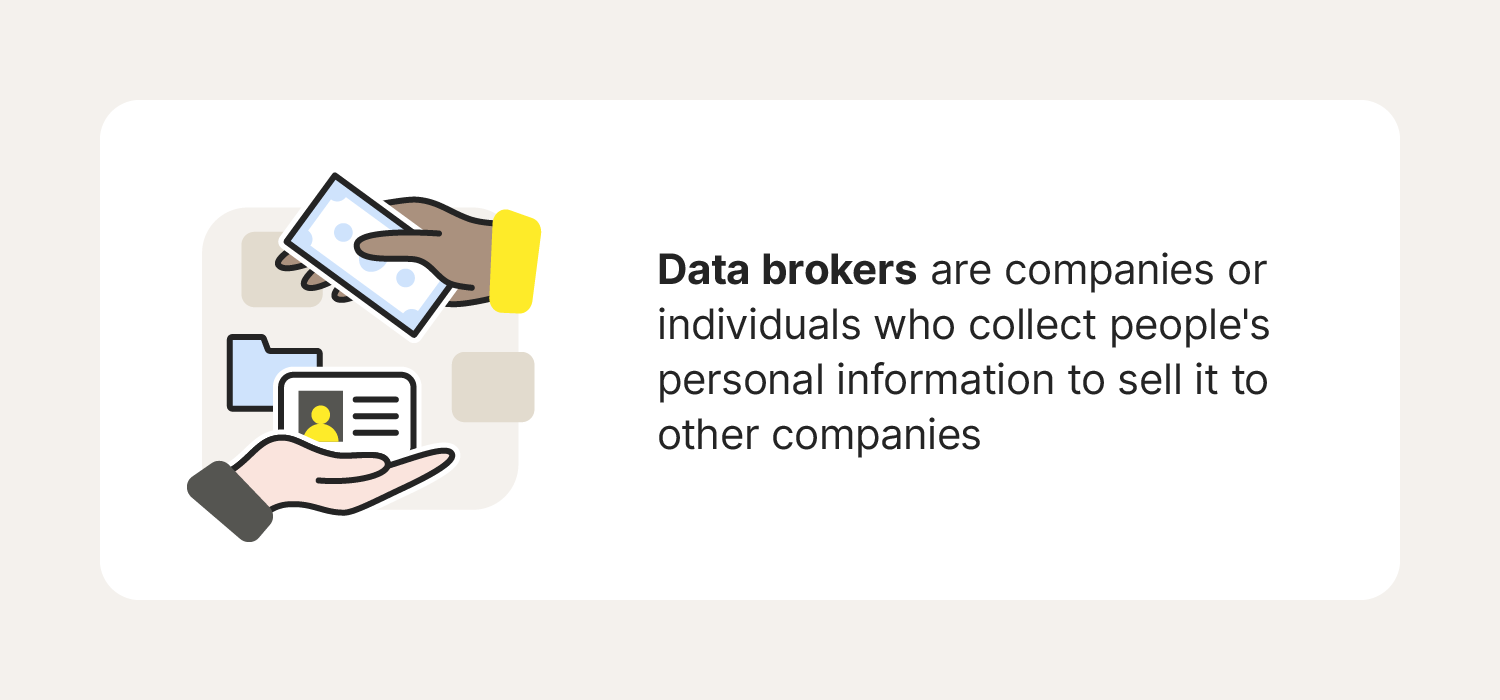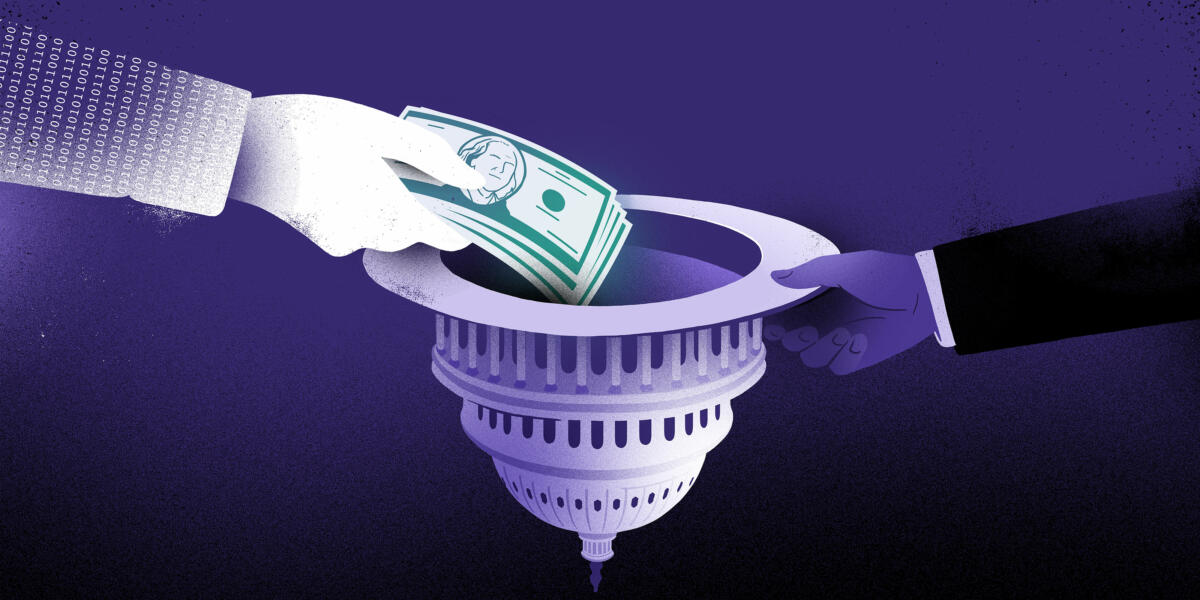Exploring the Role of Machine Learning in Data Analysis by Data Broker…
페이지 정보

본문

In today’s digital landscape, the gathering and management of information have become paramount. Organizations are constantly seeking new ways to leverage insights derived from vast amounts of collected content. This environment fosters an intricate dance between technology and strategy, where algorithms play a central role. The interplay of automated techniques allows entities to derive meaningful patterns from raw information.
Understanding consumer behavior has never been easier, thanks to sophisticated approaches that evolve rapidly. These methods dive deeply into your interests, preferences, and even habits. By processing a multitude of variables, they create comprehensive profiles, encapsulating individual uniqueness. The sheer volume of content available today offers both opportunities and challenges, creating a need for refined techniques to distill relevance.
As systems grow more adept at processing complexity, insights become sharper and more actionable. Seamlessly collating diverse sources, advanced techniques offer a nuanced perspective that can significantly impact business strategies. Organizations can anticipate trends, personalize experiences, and optimize decision-making processes effectively.
This convergence of technology and analysis reveals a fascinating new landscape, where intuition is elevated by precise, targeted insights. In essence, the synthesis of advanced methodologies transforms the way information is perceived and utilized across various sectors. It’s profound how a well-crafted algorithm can illuminate hidden connections, creating value from previously overlooked information.
Understanding Data Brokers' Role
The pivotal position that these entities occupy in the information ecosystem is crucial. They function as intermediaries, connecting various players in the market with invaluable insights. This dynamic fosters a complex web of interactions that ultimately shape consumer experiences. Without this intricate system, many businesses might struggle to access vital consumer intelligence.
These firms collect vast amounts of information from numerous sources. Personal profiles are compiled and enriched with details that reveal preferences, behaviors, and even intentions. This enables organizations to make informed decisions. With the right insights, companies can tailor their products and services effectively.
- First, they gather information from public records.
- Next, they acquire data from online activities.
- Then, they integrate insights from social media platforms.
- Finally, they use transaction records, enhancing their understanding.
Such operations not only provide businesses with critical insights but also raise questions about transparency and trust. Many consumers remain unaware of who holds their information and how it’s being leveraged. This lack of awareness creates a significant gap between the expectation of privacy and Get the full article on Medium the reality of information sharing.
Many companies rely on these entities to enhance their market strategies. The depth of the insights they offer enables organizations to develop targeted marketing campaigns. In doing so, businesses can reach audiences more effectively, tailoring their messages for optimal engagement. This interplay has direct implications for how consumers interact with brands.
Moreover, the role these entities play is often overshadowed by broader discussions about privacy. As the demand for personalization increases, so does the scrutiny of how information is collected and utilized. With each new development in technology, the responsibility of these firms to handle information ethically becomes ever more pressing.
Machine Learning Basics Explained

A fascinating realm exists, where vast amounts of information can be transformed into actionable insights. The techniques involved in this transformation are rather complex yet highly effective. Various strategies have emerged that allow systems to learn from patterns without explicit programming. As a result, these approaches enable predictions and informed decision-making based on historical trends.
At its core, this process relies on algorithms that sift through vast collections of information. Each algorithm has a specific purpose, whether it’s to classify, predict, or cluster various pieces of information. With advancements in technology, the power of these algorithms has surged, becoming increasingly sophisticated and accurate. They evolve continuously, learning from new inputs and refining their outputs.
The evolution of these algorithms often mirrors advancements in computational power. In other words, as technology improves, so too do the capabilities of these systems. For instance, neural networks have gained prominence for their ability to model complex relationships. They mimic the way the human brain operates, enabling a deeper understanding of intricate patterns.
Moreover, supervised learning, unsupervised learning, and reinforcement learning represent the main categories of these methodologies. Each category has its unique strengths and applications. In supervised learning, for example, the system is trained on labeled data, allowing it to predict outcomes based on new inputs. In contrast, unsupervised techniques explore unlabeled datasets to uncover hidden structures and relationships.
As it stands, the synergy of advanced algorithms and vast information repositories paves the way for remarkable innovations across various sectors. Industries such as finance, healthcare, and marketing are reaping the benefits of these insights. The ability to discern trends and predict future behaviors has transformed traditional practices, empowering organizations to make strategic decisions.
However, with great power comes great responsibility. Ethical considerations arise as this technology becomes increasingly integrated into our daily lives. Safeguarding privacy while harnessing insights presents a challenge that requires careful navigation. Understanding the foundational principles behind these algorithms is essential to addressing these concerns responsibly.
Data Collection Techniques Employed
In the realm of information acquisition, various strategies are employed to gather insights and create comprehensive profiles. These methods often involve a mix of technology and human input. The aim is to compile extensive datasets that can be examined for patterns and trends. As a result, organizations can better understand consumer behavior and preferences. The evolving landscape of information harvesting presents both opportunities and challenges.
One prevalent method involves scraping publicly available information from websites and online platforms. This technique allows for the gathering of vast amounts of data quickly. It often includes user reviews, social media posts, and even comments on forums. Additionally, specialized software can assist in automating this process, making it efficient and scalable. Another approach is purchasing information from various sources, such as surveys or loyalty programs, where individuals willingly share their preferences in exchange for rewards.
In-person interactions also play a role; events, promotions, and sales pitches can yield invaluable insights. Organizations often collect feedback directly from consumers, which can be analyzed to improve offerings. Furthermore, mobile applications and services frequently track user behavior, often with their consent, generating a wealth of information about habits and preferences.
Online tracking technologies have become essential in this field. Cookies, pixels, and device fingerprints allow for extensive monitoring of user behavior across the internet. These tools enable the collection of habits, interests, and even purchasing patterns over time. With sophisticated algorithms, these insights are then organized to provide valuable intelligence for targeted marketing.
In recent years, observational techniques have gained prominence as well. For instance, user-generated content on social platforms provides raw, authentic insights into preferences and opinions. This kind of qualitative data can be as informative as traditional metrics. In essence, the combination of quantitative and qualitative approaches to information collecting creates a robust framework for analysis.
Ultimately, the techniques applied in the acquisition of information are evolving continuously, adapting to technological advancements and consumer behaviors. The challenge lies in balancing effective collection methods with ethical considerations. As organizations strive for deeper insights, they must remain vigilant regarding the privacy and consent of the individuals whose information they collect. This ongoing evolution in strategies shapes the future landscape of profiling and targeting approaches.
Algorithms Powering Data Analysis
The role of sophisticated algorithms in contemporary analytical practices is paramount. They serve as the backbone, transforming vast arrays of information into meaningful insights. Various methods enable the extraction of patterns and trends that are not immediately observable. With advancements in technology, the efficiency and accuracy of these techniques have reached unprecedented levels.
Statistical models play a crucial role in predicting future outcomes based on historical patterns. These frameworks utilize various mathematical approaches to quantify relationships within the collected information. For instance, regression techniques are widely employed to determine associations between different variables. By identifying these correlations, analysts can make informed predictions.
Clustering algorithms are another essential tool in this arsenal. They group similar records together, revealing hidden structures in the information landscape. This grouping allows for targeted strategies tailored to specific segments. Think of it as organizing a library; each book's placement reveals connections between subjects.
Moreover, machine learning models have gained popularity due to their ability to learn from new information continuously. Unlike traditional methods that rely on predefined rules, these models adapt as new information becomes available. This flexibility enhances the overall accuracy of insights and predictions.
Techniques like decision trees and neural networks exemplify this adaptability. Decision trees break down complex decisions into simpler, tree-like structures, making it easier to visualize potential outcomes. Conversely, neural networks mimic human brain processes, allowing for intricate pattern recognition and complex problem-solving capabilities, which are particularly useful when dealing with unstructured information.
Furthermore, natural language processing is revolutionizing how textual information is interpreted. As vast amounts of user-generated content proliferate, the ability to analyze sentiment and context becomes invaluable. This technology enables organizations to gauge public opinion and tailor their strategies accordingly.
The integration of these algorithms into analytical frameworks has transformed the landscape significantly. Organizations can now derive actionable insights that drive decision-making processes. With enhanced accuracy and efficiency, the synergy between conventional methods and innovative techniques continues to shape strategic directions across various sectors.
Market Applications of Analyzed Data
The insights derived from extensive information have become invaluable resources across various industries. Companies leverage these insights for targeted marketing, strategic decision-making, and improving customer experiences. The applications are vast, intertwining with technologies and consumer behaviors. As firms strive for competitive advantages, the demand for refined analytics grows exponentially.
In particular, numerous sectors benefit from these insights:
- Advertising: Tailored campaigns deliver specific messages to specific audiences, thereby increasing conversion rates.
- Healthcare: Enhanced patient outcomes are achieved through personalized treatment plans based on predictive analytics.
- Finance: Risk assessment models become more accurate, allowing institutions to mitigate losses effectively.
- Retail: Understanding consumer preferences leads to optimized inventory management and pricing strategies.
- Telecommunications: Churn prediction models help operators retain customers through proactive engagement.
The growing reliance on these insights has sparked innovative applications and techniques. For instance, businesses are increasingly utilizing predictive modeling to anticipate trends and adjust strategies accordingly. This proactive approach helps them stay relevant in rapidly evolving markets. Additionally, the ability to harness consumer preferences paves the way for more refined product development and service offerings. However, as the applications expand, so too do the implications for privacy and ethical practices.
Ultimately, the integration of processed insights into business strategies shapes the future landscape across sectors. These applications not only enhance operational efficiencies but also redefine the relationship between businesses and their customers. By making sense of vast amounts of information, organizations can better align themselves with consumer needs. In this dynamic environment, understanding market applications becomes essential for success.
Ethical Concerns with Data Usage
In today's interconnected world, where vast amounts of information are generated daily, ethical implications surrounding the utilization of personal information have become a pressing issue. As organizations increasingly rely on advanced techniques to gather insights, questions about privacy rights and consent surface frequently. The ease of accessing personal details raises alarms regarding autonomy and control. People often feel vulnerable, unsure of how their information is being collected and utilized. Furthermore, there is a growing unease about the potential for misuse.
Privacy is a fundamental aspect of human dignity and freedom. When individuals share their information, they generally expect it to be safeguarded and used appropriately. The reality, however, often contradicts these expectations. In many cases, consent is not sufficiently informed; users may not realize the full depth of what they are agreeing to. Additionally, the notion of informed consent becomes blurred when lengthy and complex agreements are presented, leaving many feeling overwhelmed.
The prospect of surveillance lurks large in discussions about ethical practices. With countless entities monitoring activities, individuals may feel as if they are under constant scrutiny. This pervasive observation can lead to a chilling effect on behavior. People might alter their actions out of fear of being tracked, which undermines the very essence of personal freedom. The constant surveillance of individuals ultimately cultivates an environment of mistrust.
Moreover, the potential for discrimination based on collected information cannot be overlooked. Algorithms may reflect societal biases, thereby perpetuating existing inequalities. When sensitive characteristics, such as race or economic status, are analyzed, the risk of exclusion or unfair treatment threatens to undermine social equity. Such practices raise ethical dilemmas about fairness, accountability, and transparency within companies.
As technology continues to evolve, the challenge of ensuring ethical standards becomes even more complex. Organizations must navigate a landscape filled with legal regulations, industry norms, and public expectations. The conversation surrounding ethical responsibility will only intensify as society seeks to balance innovation with individual rights. Ultimately, the question remains: how do we foster a culture where personal information is treated with the respect it deserves?
Trends in Data Brokerage Industry

The landscape of the information trading sector is ever-evolving. New technologies emerge, and consumer behaviors shift rapidly. This continuous flux presents both challenges and opportunities for organizations involved in the acquisition and sale of personal insights. Recognizing patterns and adapting to them has become crucial for sustaining relevance in a competitive marketplace.
One of the most significant trends is the increasing reliance on automation. Processes that once demanded considerable human intervention are now streamlined through sophisticated programs. As a result, efficiency has surged while costs have diminished. Companies are now able to gather vast volumes of information with minimal effort.
Moreover, there is a noticeable shift towards greater transparency. With consumers becoming more aware of their rights, businesses must openly communicate their practices. This demand for clarity is not just a passing phase; it reflects a deeper societal expectation for accountability. Organizations are learning that trust is essential for long-term relationships.
Privacy regulations are also undergoing transformation. Recent years have seen governments implementing stricter guidelines to protect individuals' information. Compliance has become a priority, compelling firms to reassess their protocols and approaches. The challenge lies in balancing compliance with the need for comprehensive analytics.
Artificial intelligence tools have also gained traction. These technologies allow for enhanced predictive capabilities and provide actionable insights about consumer habits. As more entities leverage AI, competition intensifies. Staying ahead necessitates not only innovation but also an understanding of ethical implications.
In essence, the information gathering sector is at a crossroads. The focus is shifting towards engagement, respect for individual rights, and responsible practices. Organizations must navigate this intricate landscape delicately, as their decisions today will shape their future standing in the market.
Moreover, the rise of international platforms has led to increased scrutiny from various jurisdictions. Cross-border transactions and the flow of insights across borders complicate regulatory compliance. The convergence of different legal frameworks presents both an opportunity and a challenge. Companies may find themselves navigating a complex web of regulations that vary significantly from one region to another.
To summarize, the trends observable in the information marketplace indicate an industry in flux. As innovation continues to unfold, stakeholders must remain vigilant. Adapting practices to align with consumer expectations and regulatory demands will be critical for sustained success. The future promises to be dynamic, and those who embrace change will thrive.
Trends in Data Brokerage Industry
The landscape of information trading is evolving rapidly. Several shifts in consumer behavior and technology are influencing this sector. As the world becomes more interconnected, new practices emerge. The demand for insights is at an all-time high. Businesses are eager to leverage various sources for competitive advantage.
In recent years, the integration of innovative technologies has become prevalent. Companies now employ advanced analytics to enhance their offerings. This is not just about collecting information anymore; it’s about making sense of it. The sophistication of tools and techniques has significantly increased, leading to more refined outcomes.
A notable trend is the rise of real-time analytics. Organizations can now process massive volumes of information instantaneously. This ability allows them to respond swiftly to market changes and consumer preferences. Consequently, businesses are not merely reactive; they are proactive in their strategies.
Additionally, privacy concerns have spurred a shift in practices. Consumers today are more aware of their rights and the information that is collected about them. Many organizations are adjusting their approaches to comply with emerging regulations. This focus on ethical standards is becoming a fundamental aspect of the industry.
Moreover, partnerships between firms seeking insights and technology providers have grown. Collaborations enhance the quality and breadth of offered services. With new tools and platforms, the range of available information expands significantly. This fosters innovation, enabling players in the field to stay relevant and competitive.
The following table summarizes key trends impacting this domain:
| Trend | Description |
|---|---|
| Real-time Processing | Instantaneous analysis of vast amounts of information for quick decision-making. |
| Heightened Privacy Awareness | Increased consumer vigilance leading to stricter compliance and ethical practices. |
| Technological Integration | Use of advanced analytics and AI tools to improve data-derived insights. |
| Collaborative Efforts | Partnerships between companies for enhanced data services and capabilities. |
Overall, as the industry continues to adapt, it faces both challenges and opportunities. Players must remain agile to navigate this shifting environment. Evolving consumer expectations will undeniably shape future strategies. The balance between innovation and ethical considerations is crucial for sustainable growth in this space.
Regulatory Responses to Data Practices

In recent years, concerns regarding personal information management have intensified significantly. The evolving landscape of technology has prompted governments to reevaluate their approaches. As businesses gather more insights, the need for oversight grows. Many individuals feel their privacy is at stake. This situation calls for robust regulatory mechanisms to ensure ethical practices.
Various jurisdictions have begun implementing new rules. These regulations aim to protect individuals from potential misuse of their information. Legislators are focusing on transparency, requiring companies to disclose their collection methods. The objective is clear: empower consumers with knowledge about how their information is handled. Some regions have adopted stringent guidelines, while others continue to explore suitable frameworks.
Compliance is not merely a checkbox exercise but an integral part of ethical business operations. The introduction of specific laws has led to substantial changes in organizational strategies. Companies are now investing in technologies that enhance their capability to remain compliant. There are financial implications too; non-compliance can result in hefty fines. As organizations adjust to these new requirements, the landscape is changing.
Furthermore, public sentiment plays a crucial role in shaping policies. Citizens demand greater accountability from entities that handle their information. Advocacy groups are pushing for more stringent measures, advocating for rights that prioritize consumer privacy. In response, lawmakers are working tirelessly to fill gaps in existing legislation. This ongoing dialogue between the public and policymakers is fundamental.
While regulations can seem burdensome, they ultimately contribute to a healthier ecosystem. The balance of power is shifting towards consumers, allowing them more control over their information. As organizations adapt, they may discover that ethical practices can foster trust. Trust, in turn, can lead to customer loyalty and a stronger brand reputation. The implications of these regulations ripple through the entire business landscape.
Looking ahead, the future of oversight appears dynamic. Continual advancements in technology will shape the regulatory journey. Authorities will need to remain agile, adapting rules to keep pace with innovation. This vigilance is essential to protect individuals while enabling growth in the marketplace. The intersection of regulation and technology will be a critical space to watch in the coming years.
Future of Machine Learning in Brokerage
The evolution of technology is reshaping various industries, and the realm of information analysis is no exception. Emerging algorithms and advanced computational techniques will continue to transform how insights are derived. The next phase promises exciting developments. Innovations in automation and analytics are set to redefine norms and expectations.
Institutions are increasingly leveraging sophisticated tools to streamline operations. This allows for enhanced accuracy in predictions and assessments. The integration of automation leads to more efficient workflows. Furthermore, there’s a growing emphasis on real-time processing of insights, enabling companies to act swiftly.
In the coming years, the role of predictive models will likely expand significantly. With continuous advancements in artificial intelligence, organizations will harness these tools to create deeper relationships with their clientele. This shift will not only improve service offerings but also enhance customer satisfaction. The fusion of innovative technologies and customer-centric strategies will become a key focus area.
| Focus Area | Potential Impact |
|---|---|
| Automation | Enhanced efficiency and reduced operational costs |
| Real-time Analysis | Improved decision making and responsiveness |
| Predictive Modeling | Stronger customer relationships and personalization |
| Ethical Practices | Greater trust and compliance with regulations |
Furthermore, ethical considerations will take center stage as stakeholders navigate the complexities of responsible information management. The expectation for transparency and accountability will challenge organizations to adopt best practices. As consumers become more informed, they will demand greater oversight, leading to necessary adaptations within the industry.
Ultimately, the symbiosis of innovation and ethics will dictate future trajectories. Organizations that prioritize both technological advancement and responsible practices will emerge as leaders in the field. Emphasizing sustainable approaches will pave the way for long-term success while building trust with the public.
The horizon looks promising, filled with opportunities for creative solutions. As the industry matures, continuous adaptation will be essential for survival. Embracing change will not only enhance competitive advantage but also foster a culture of innovation. In this dynamic environment, the marriage of knowledge and technology will redefine paths forward.
- 이전글NeuroPure - Experience Natural Nerve Support for Optimal Health 24.10.28
- 다음글Leading Free Live Cam Chat Services to Explore 24.10.28
댓글목록
등록된 댓글이 없습니다.
